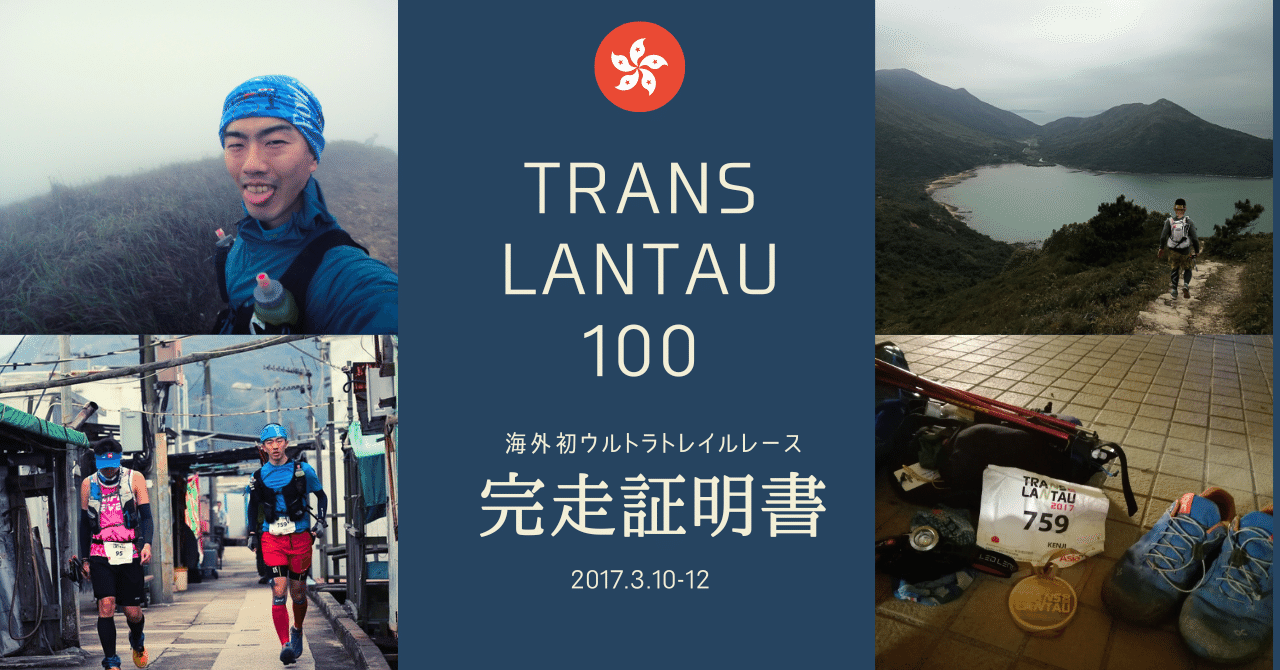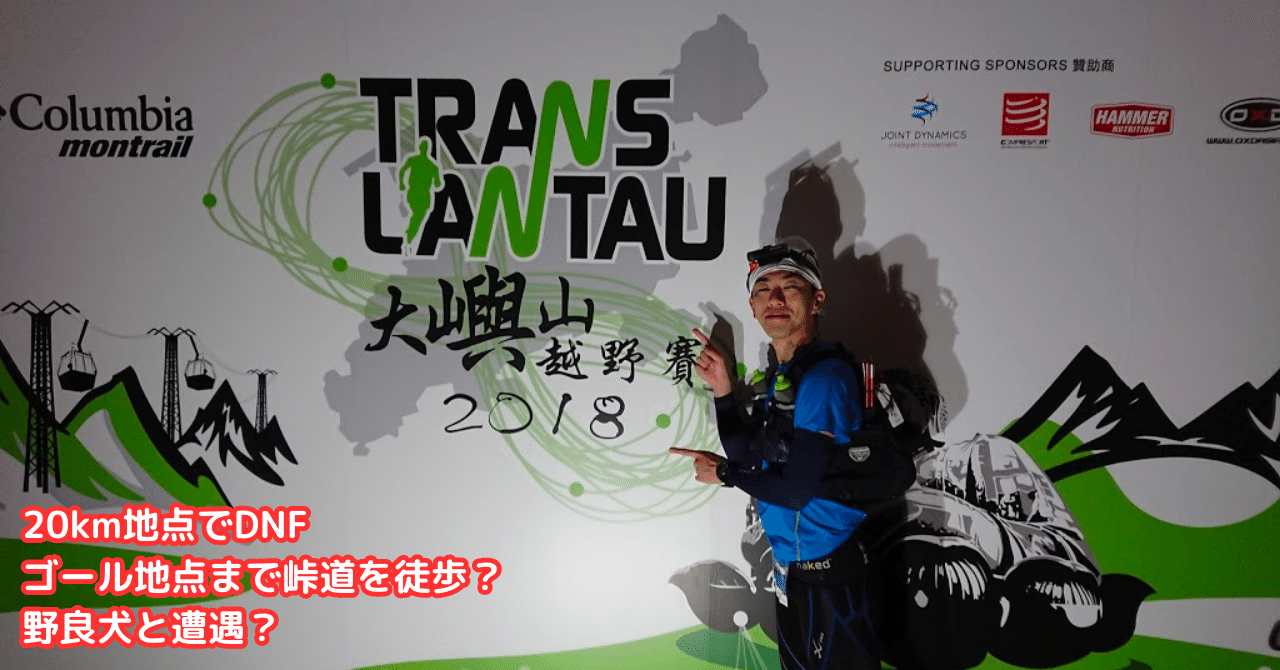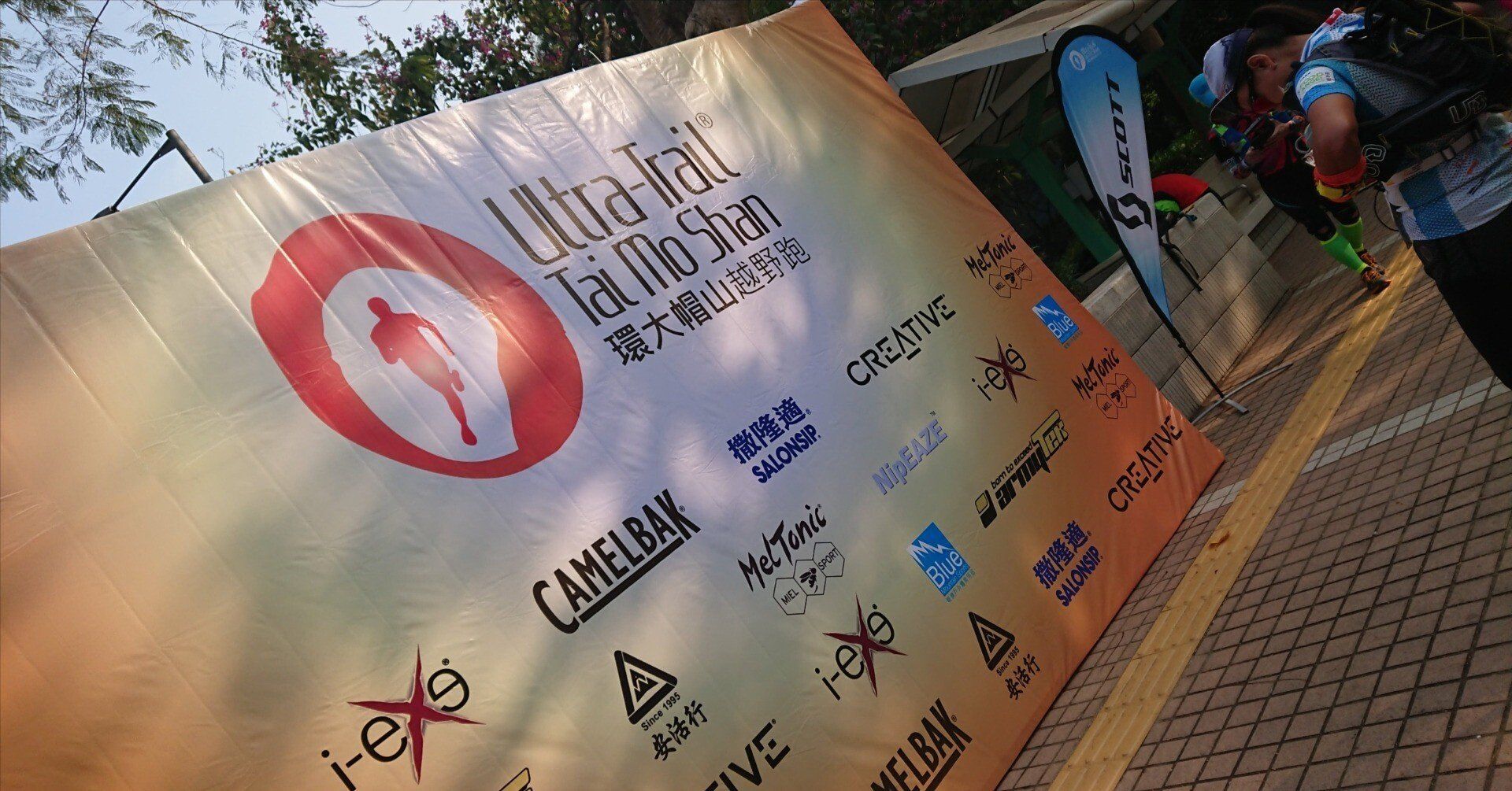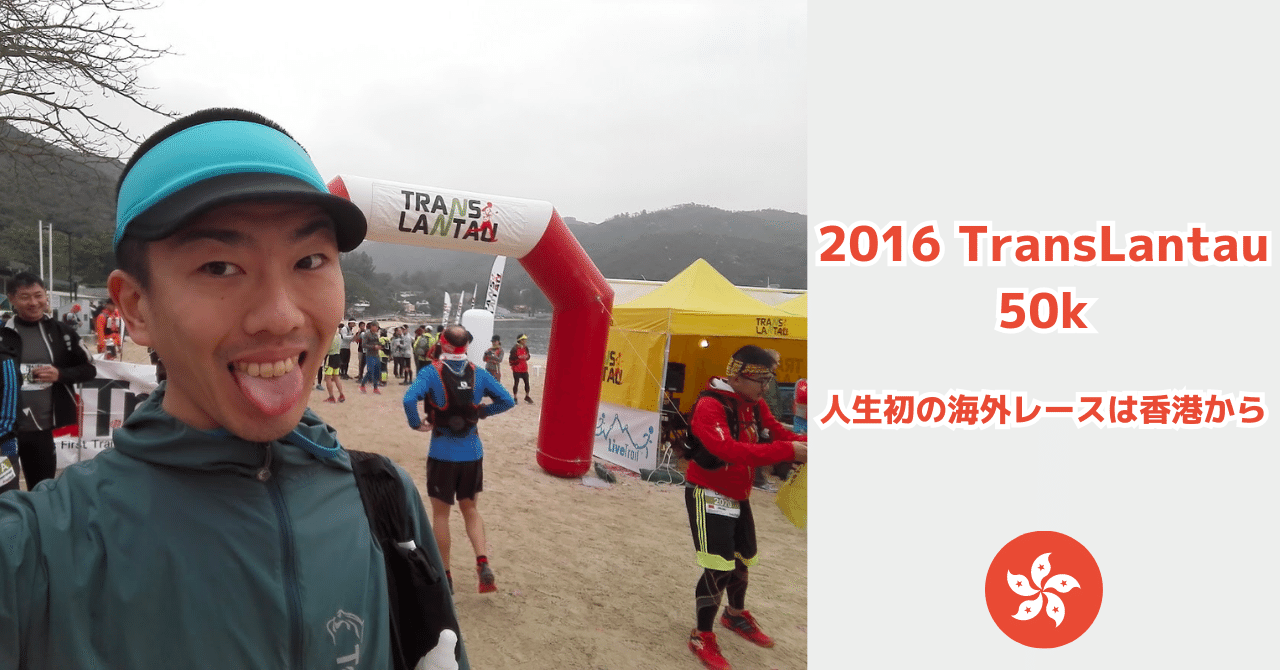I ran the TransLantau 100 in Lantau Island, Hong Kong from March 10-12, 2017. I successfully completed the race and finished the long journey in 28 hours, 48 minutes, and 28 seconds. It was a harder race than I had imagined.
However, looking back on that hard race, I now feel that it was a wonderful experience. It has been more than two days since I completed the race, but I am still reeling from the excitement of finishing the TransLantau 100km. It's time to get back to the real world... (laughs).
And I am proud to have finished this race, and my confidence has grown even more. I really felt that ultra trails really help us grow as human beings.
Now, in this post, I will summarize the situation of the TransLantau 100km from my perspective.
Race Overview
TransLantau is a trail running race on Lantau Island, Hong Kong, and is one of the leading 100km trail running races in Hong Kong. It is 103 km long, with a cumulative elevation of 5072 m, and a time limit of 33 hours. Other events are 50 km and 25 km.
Lantau Island is home to Hong Kong International Airport, the gateway to Hong Kong, and Disneyland. In contrast to large cities such as Hong Kong Island and Kowloon, Lantau Island is a quiet resort and country town where one can enjoy the mountains and the sea.
This year, 680 runners competed in the 100km category, with 510 finishers. The finish rate was 75%.
Note that I ran the 50km TransLantau last year. Please click here to see how it went.
Actually running the TransLantau 100, it was harder than the Eiger Ultra Trail...
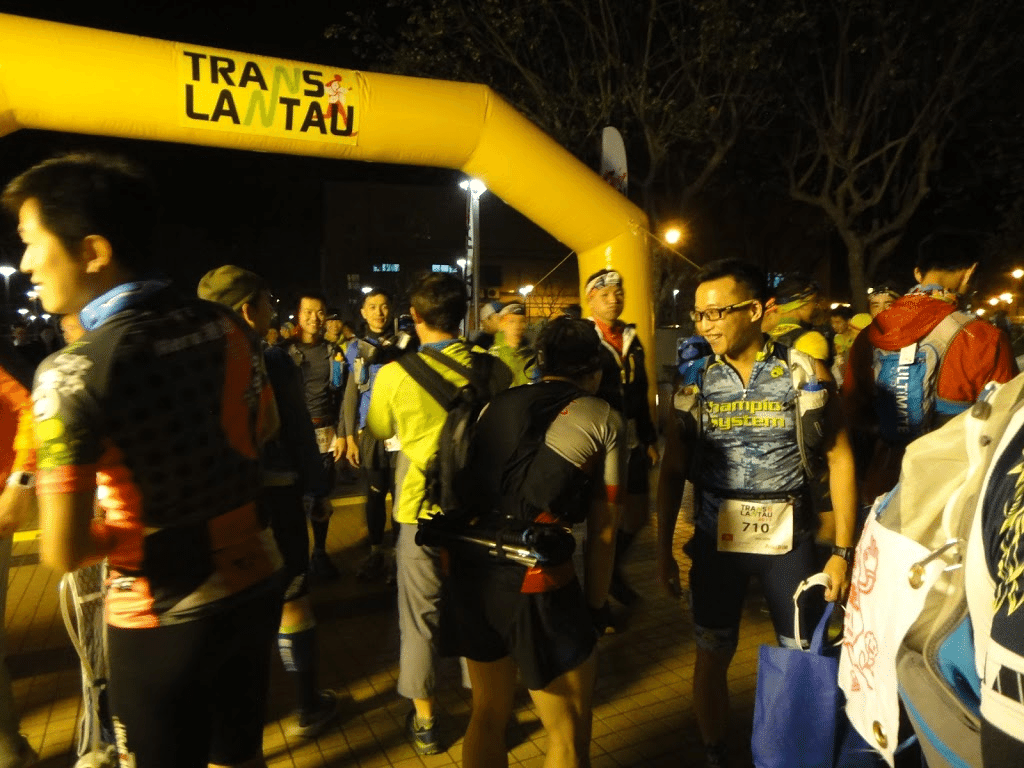
I felt it was harder than the Eiger Ultra Trail I ran last year.
Considering the cumulative elevation and altitude, it is clearly the Eiger, but when I actually ran it, I felt that TransLantau was harder, or rather, more strenuous. ・・・・ I could understand why the time limit was 33 hours (lol).
- There was thick fog and strong winds near the summit.
- The average runner would face two night runs.
- Fighting against sleepiness (due to the late night start).
- The course is technical in many places, and it is not easy to proceed.
- The steep climb on the road from Daao to Kouping, which is about 7 km, is heartbreaking.
- They do not make it easy until the end.
Eiger runs through areas where adults and children can hike, but Lantau has many trails that are not recommended for children to play (laugh).
To be honest, I licked TransLantau too much...it hurt. It was just the most technical and toughest 100km class trail race held in Hong Kong.
Climatic conditions unique to Lantau Island: thick fog + strong winds

The toughest part of the race was the dense fog and strong winds around the summits of Lantau Peak and Sunset Peak. This was also the case last year when we ran 50 km.
The photo above was taken at Lantau Peak in the early morning. Even in the morning and daytime, it is hard work, but Sunset Peak is basically a nighttime run, so fog, strong winds, and night time make the headlights useless. The wind was so strong that it almost blew away our trail poles.
So, I decided that it would be dangerous to run alone in the bad conditions, so I followed a local Hong Kong runner and we made it through. To be honest, I felt intimidated by the idea of running alone.
I was told by a Japanese resident of Hong Kong whom I met on the ferry going to the race site that this is the unique climate of Lantau Island, and that it is always thick fog plus strong wind.
Fighting against sleepiness
The race start time was from 23:30 on March 10. This was the first time for the race to start at midnight. In Japan, it is almost the same as the Ontake Ultra. I thought I would be able to manage it, but I was attacked by sleepiness from the beginning... (laugh) For some reason, I felt very sleepy, especially while the sun was setting, and it was hard to walk and act.
I found that when sleepiness struck, I could alleviate it by taking a nap at the aid station; even 10 to 15 minutes would do the trick. I felt that human beings are a wonder. I am sure that this experience will be useful for the 100-mile race I will eventually participate in.
Unusual Lost and Found during the Race...
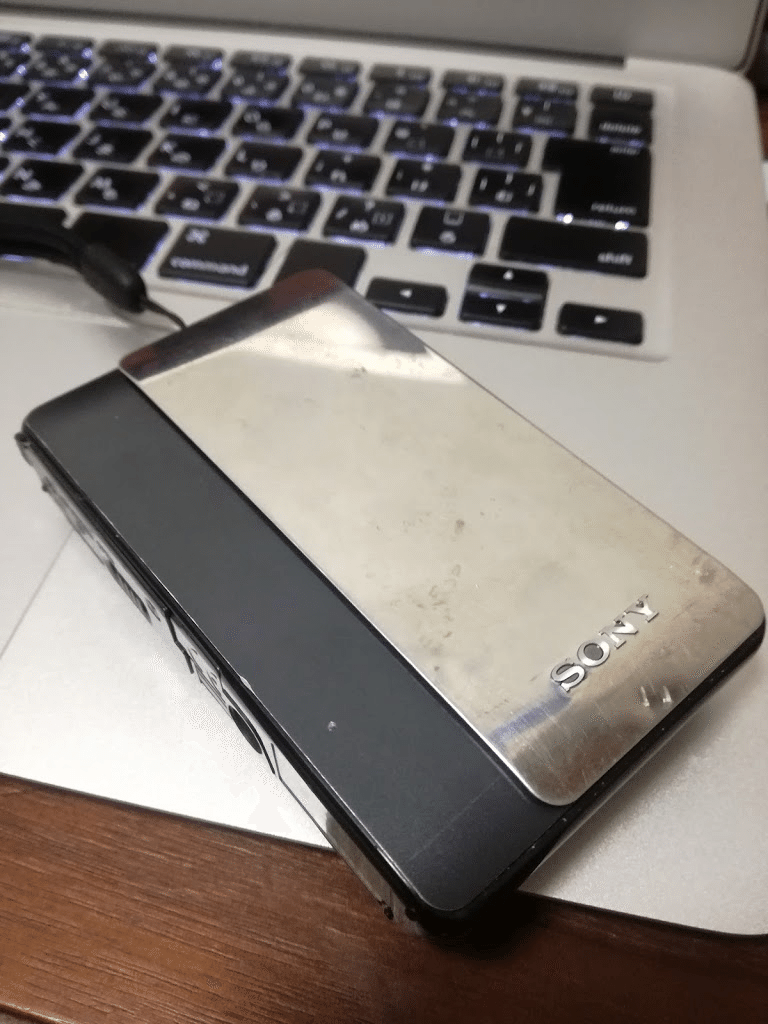
During the race, many things were lost or broken.
- Lost my course elevation chart somewhere
- Lost my Blackdiamond Digital Liner (gloves)
- Lost my Ultimate Direction soft flask
- My long-time favorite Sony waterproof digital camera, the DSC-TX5, broke down during the race.
I wonder if I get distracted when I am sleepy or run for long periods of time.
As for the soft flasks, if I lost one, I would not be able to secure the 1 liter of water required by the race rules, so I had to pick up a usable plastic bottle from the trash at the aid station to cope with the situation...survival (laughs).
My digital camera is one that I have used for more than seven years. I had always liked it because it was waterproof, thin, lightweight, and had good image quality, but since last spring, when I turned it on, it would vibrate for about 20 seconds, making it difficult to take pictures.
I managed to get through the Eiger in July and the Kumano in December, but this time it completely broke down. When I turned on the camera, it kept vibrating and I could not take pictures...( TДT) So, I had to part ways with my DSC-TX5 after this race. Thank you for all the years of capturing the mountain scenery! Next time, I'll go for an action cam like Go Pro.
This race showed me the real charm of Hong Kong

When people think of Hong Kong, they have a strong image of tall buildings. Accommodation costs are also high, and when you stay in cheap accommodation, it is a small room like a solitary cell. I, too, do not like this unique view of Hong Kong.
Lantau Island, however, is different. The TransLantau race is a round-the-clock race around Lantau Island, so you can feel the charm of Lantau Island while running the race. You can enjoy the sea and mountain scenery at the same time. In Japan, the scenery resembles that of the Izu Peninsula or the Mikata Goko (Five Lakes of Mikatao) (Fukui).
In particular, I really liked the fishing village of Tai-ao. It made me wonder if Hong Kong was like this in the past. (The photo below shows the scenery of Tai-ao.)
Also, at night, you can see the night view of Hong Kong International Airport and Tung Chung area from the top of the mountain. It was really beautiful.
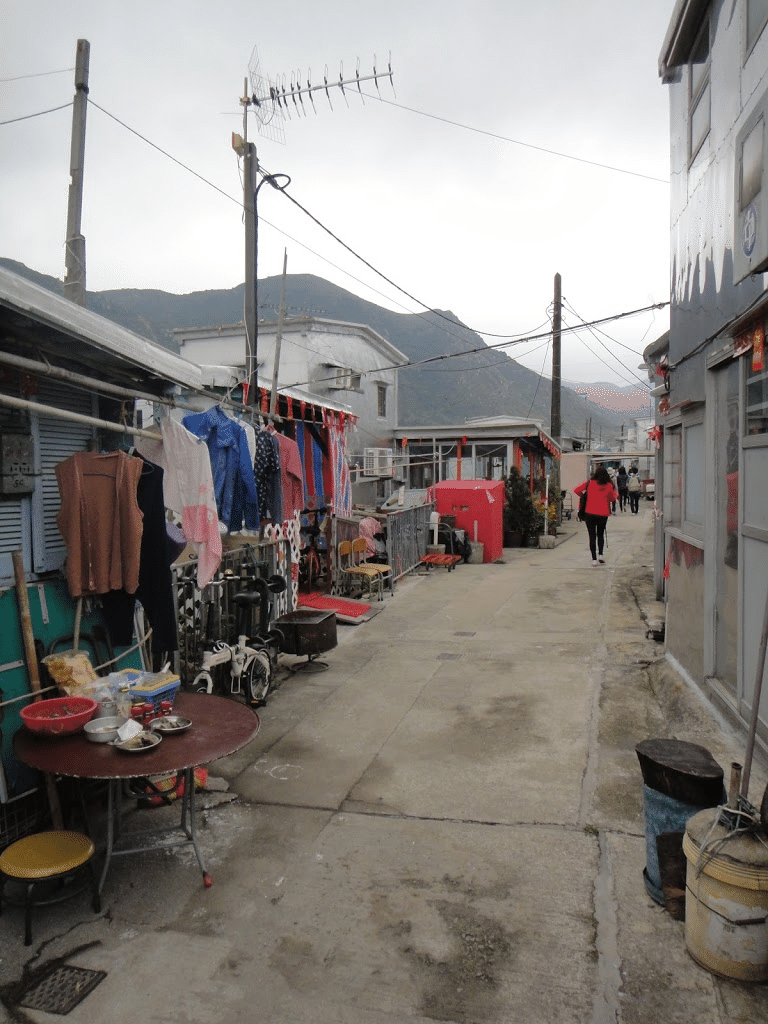
About my own running
Since last year's Eiger Ultra Trail, I have been strengthening my body thoroughly by adopting Kaatsu Training and HIIT. As a result, my cardiopulmonary function and VO2Max have improved, giving me a big advantage, especially on climbs.
In addition, my encounter last month with the book "Zero Base Running" written by Takashi Takaoka Naoshi also contributed greatly to this race. I was able to make significant improvements, especially on the trail descents, which had been my weak point.
Instead of using my legs to brake and control my speed, I was able to control my speed using my upper body movements, so I did not have any of the pain I used to have in ultra-long distance races, where I would overuse my quads and have a hard time going down the trail toward the end of the race.
The theory of running with the movement of the torso instead of using the legs makes a lot of sense. I still have a lot to learn, but I want to practice more and make it my own. I'm looking forward to the Eiger Ultra Trail 2017 and the UTMF, which I'm sure I'll be running in the future...
Finally...
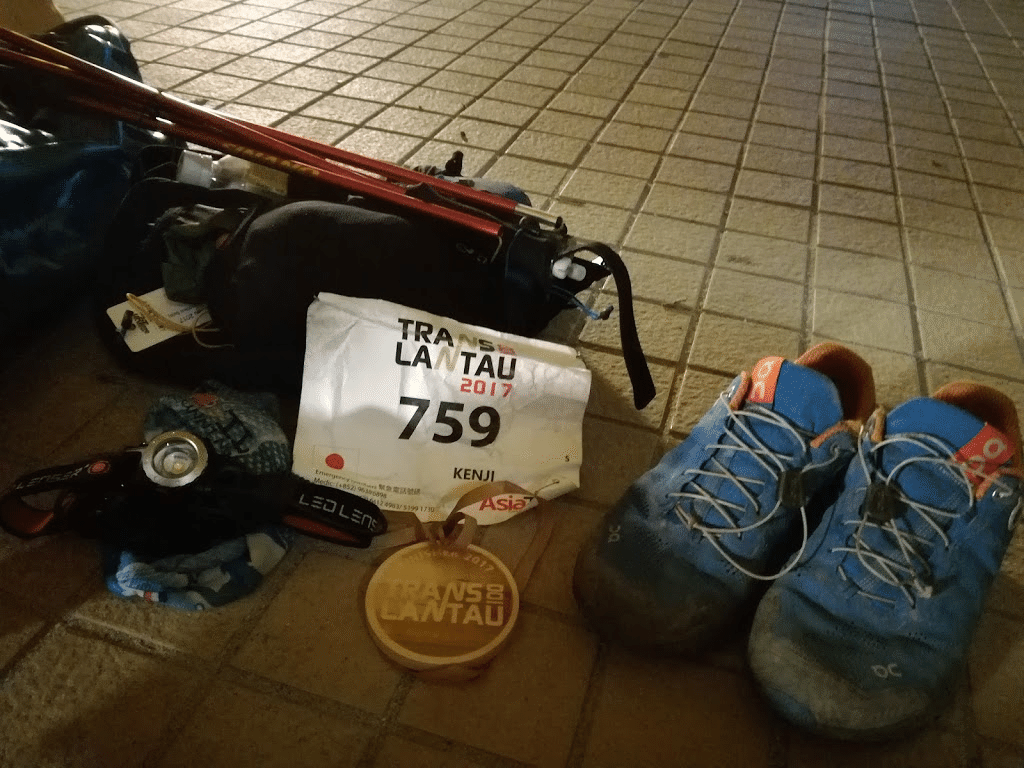
I consider TransLantau as a big race for me, and after arriving in Hong Kong, it was hard to relax, probably due to nerves.
- My friends who competed in TransLantau with me, though in different events.
- My friends in Hong Kong who treated me to dim sum in Central Circle and drove me to the airport after the race (who I met at last year's TransLantau 50km).
- Japanese friends who cheered us on Facebook and congratulated us after the finish line.
- Japanese runners who ran the 100km while chatting with me along the way.
- All the runners who ran the long 100km together.
- The race management, photographers, and volunteers at the aid stations.
However, on the boat ride to Lantau Island on race day, I found Japanese runners and talked with them about many things, which eased my nervousness. I felt it was important to meet and talk with Japanese people in a race in a foreign country.
Finally, I would like to close here as an acknowledgement.
Thank you very much. It was a great memory and a fun long trip to Hong Kong.
